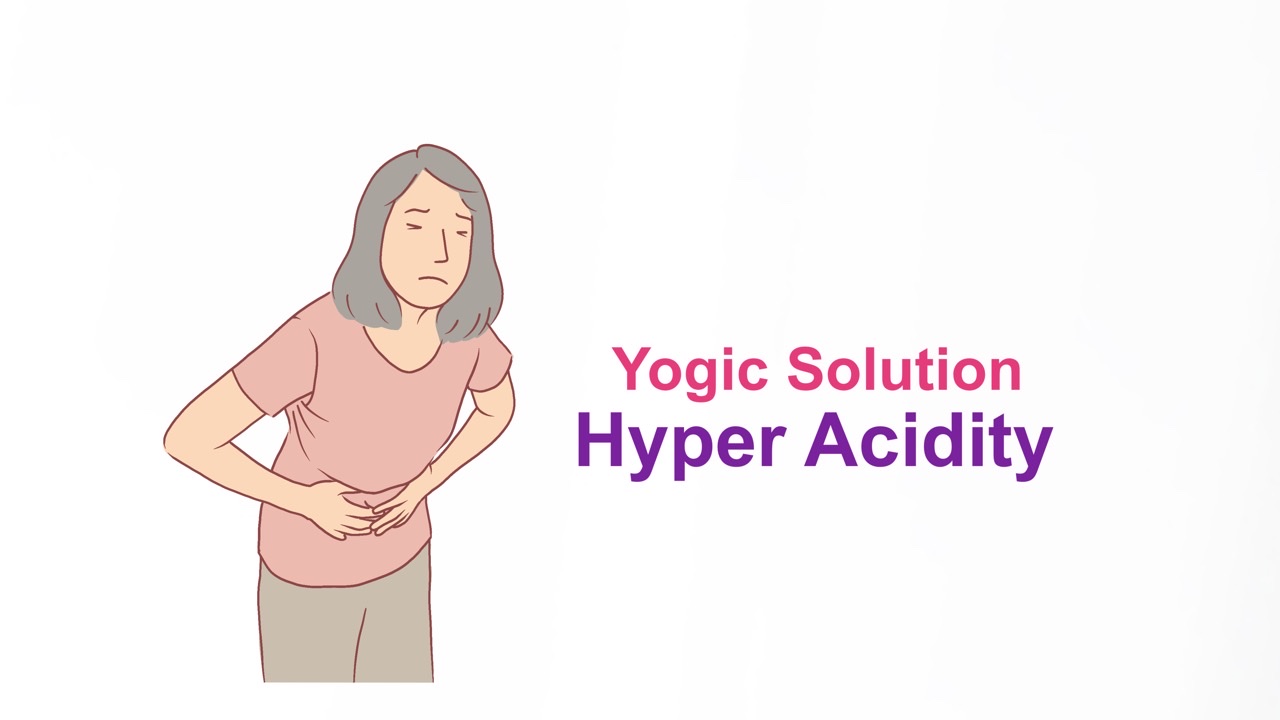
Yogic Method For Acidity
3 years ago By Yogi AnoopThe Yogic Solution for Hyperacidity
Today's lifestyle is full of stress and the myriad thoughts act negatively on the brain leading to hormonal secretions that not only spell danger for the digestive system but also give rise to a range of ailments. One among such ailments is hyperacidity which not only impacts the stomach but also diminishes brain power and leads to a range of health-related issues. Any ailment can strike anyone, it is not a big deal, however, we must not ignore if a particular problem arises frequently and regularly.
Symptoms such as burning sensation in the stomach or chest, gas formation, belching, nausea, acid reflux, constipation and heaviness in the head, among others, when appearing frequently, must be attended to and addressed immediately.
One of the primary ways to resolve this is by tweaking the lifestyle. Special attention should be given to mental rest, relaxation of muscles and nerves, quality and quantity of food coupled with yogic treatment in the form of pranayama and incorporating asanas into the daily routine.
Below, we shall discuss asanas, pranayama and diet for the same.
Asana
To get rid of the stress of daily life, we should practise some asanas, especially to keep the stomach free from stress and avoid hyperacidity. In order to diagnose this problem, one must practice asana which reduces hyperacidity by balancing Vata and Pitta in the body. One more thing that needs to be kept in mind is that any asana and pranayama should not be practised in a hyperactive manner. It must be performed with ease and slowly, in a calm and relaxed manner.
Asanas such as Pawanmuktasana, butterfly asana, Vajrasana, Supta Vajrasana, Mandukasana, Bhujang Asana and Halasana etc. can prove to be very effective. It is appropriate to do these asanas only under special guidance.
Tip:
Pranayama, yoga or any activity done in an aggressive manner, especially when the body, the nervous system as well as the mind are under stress, may aggravate the situation instead of mitigating the problem.
Pranayama:
Ujjai, sheetli, left nostril as well as Chandrabhedi pranayama, are all extremely beneficial in treating the problem of hyperacidity. Below, I have described the method of practising Kaki mudra which is beneficial in treating hyperactivity.
Sit in any meditative posture such as Padmasana, Siddhasana or Sukhasana, keeping the spine, neck and head straight. Relax your eyes and close them, take long, deep breaths at least five times. Now, roll your lips in an o-shape manner similar to a crow and slowly breathe from your mouth. Then relax your face and mouth and exhale normally from your nose. This is one cycle of Kaki Mudra. Initially, practice it for twelve rounds then gradually increase it to sixty.
Things to remember: People with Kapha constitution must not perform kaki mudra instead can perform Ujjai or sheetli pranayama under strict guidance of a guru.
Relaxation and meditation:
The root cause of all human problems in today's material age is mental stress and emotional imbalance. The only permanent solution is meditation and yoga nidra. Therefore, if we want to keep our body, mind and emotions healthy, then we must practice yoga, meditation and pranayama regularly in the morning and evening.
Diet:
Consume a natural, sattvik and balanced diet. Strictly abandon fried, fried, spicy food. Take food when you are very hungry and avoid overeating. Chew the food thoroughly and eat at a regular time only.
Recent Blog
Copyright - by Yogi Anoop Academy
